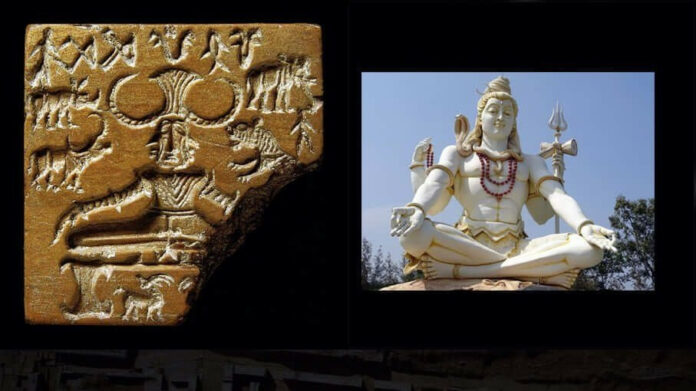Unearthing the Enigma of Mohenjo-daro
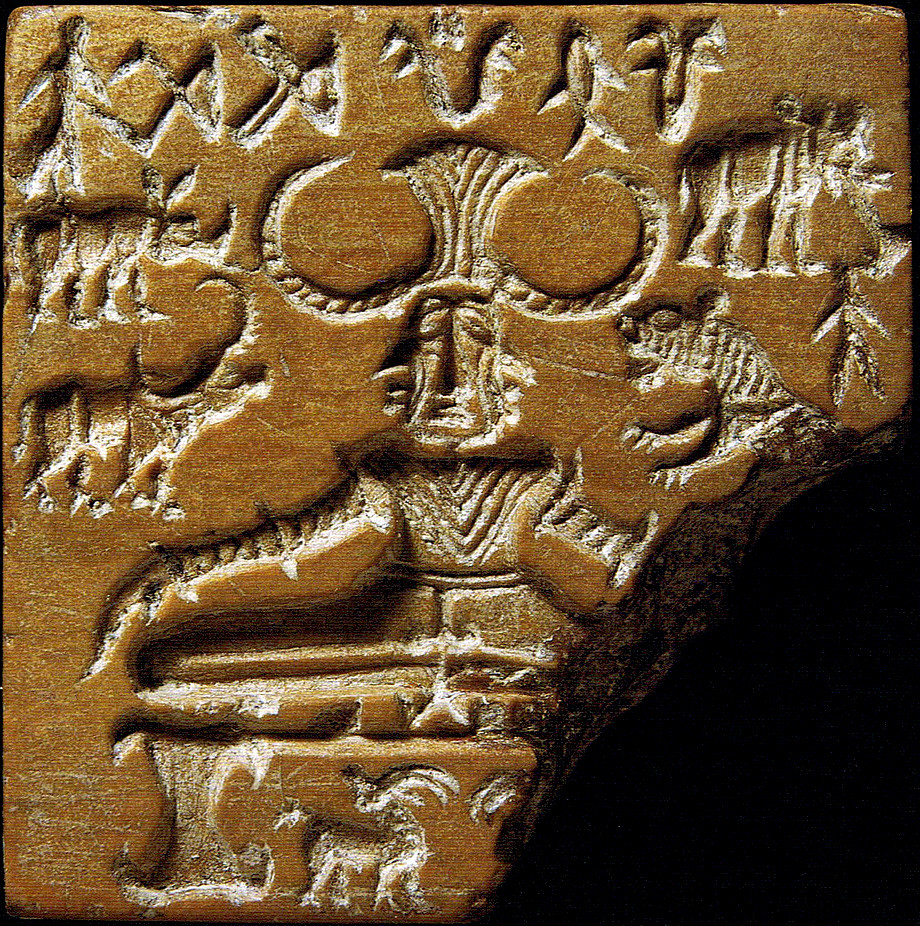
In the dusty ruins of Mohenjo-daro, an ancient city of the Indus Valley Civilization, archaeologists made a remarkable discovery during the 1928-29 excavation. Among the countless artifacts unearthed was a small steatite seal that would come to be known as the Pashupati Seal, dating back to around 2350-2000 BCE. Little did they know that this tiny object would spark decades of debate and fascination among scholars worldwide.
A Seated Figure Amidst Beasts
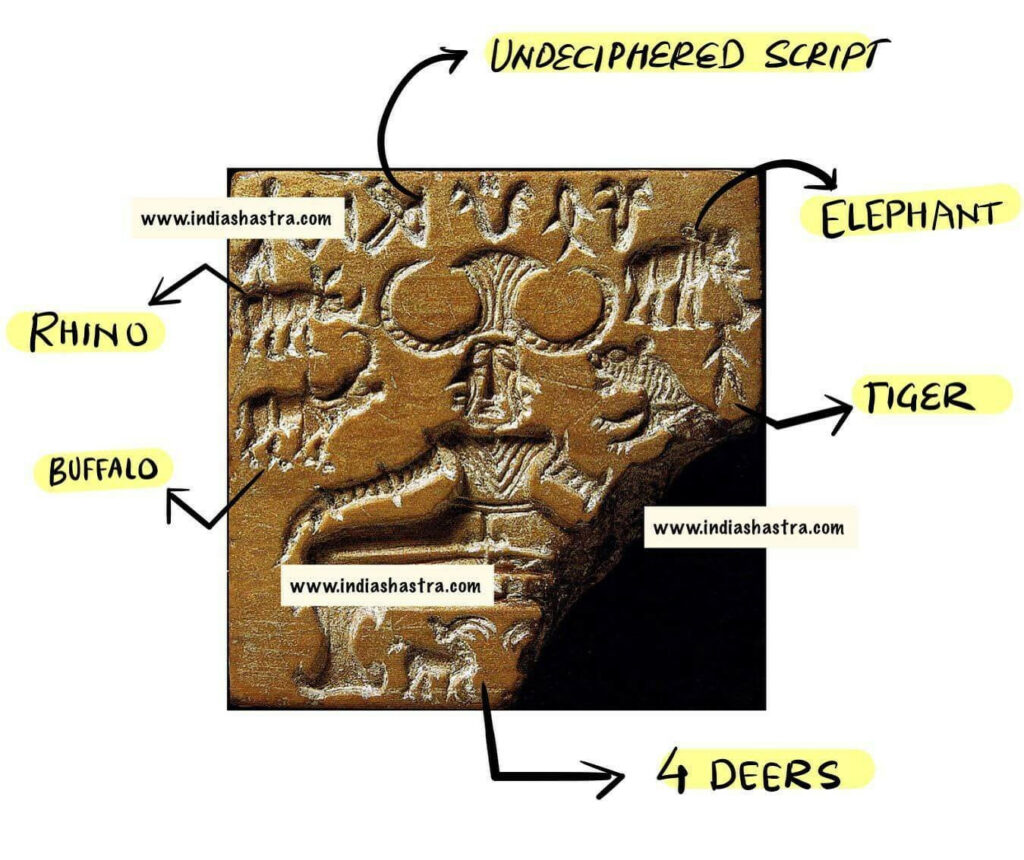
The seal’s central image depicts a seated figure, possibly with three faces, wearing a horned headdress and surrounded by animals. This unique representation immediately caught the attention of researchers, as it stood out from the thousands of other seals found in the Indus Valley, which typically featured animal motifs.
Interpretations and Theories
The Shiva Connection
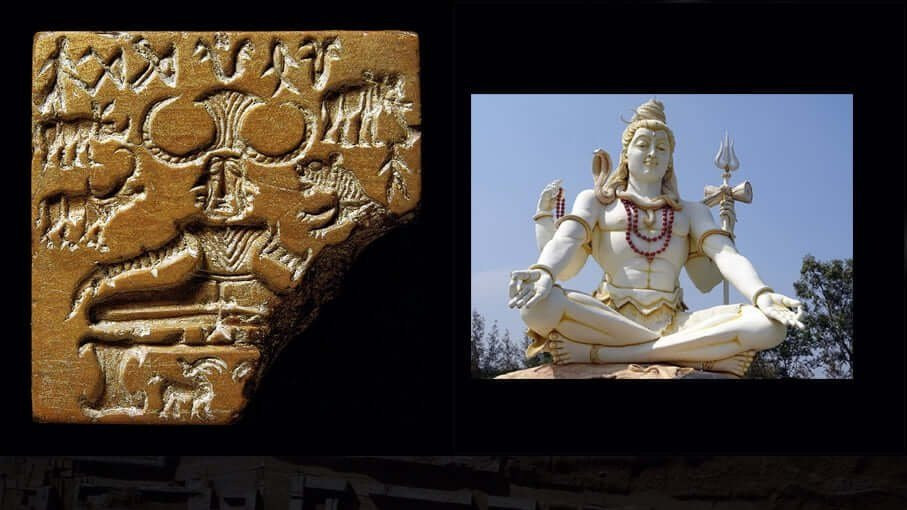
Some scholars proposed that the figure might represent an early form of the Hindu god Shiva, known as Pashupati or “Lord of Animals.” This theory gained traction due to certain similarities with later depictions of Shiva, including the possible ithyphallic nature of the figure, which IVC specialist Jonathan Mark Kenoyer supported in 2003.
Yoga’s Ancient Origins?
The seal’s complexity and the prominence of a human figure in a yogic-like posture led to speculation that it might be one of the earliest known depictions of Yoga. This tantalizing possibility hinted at the ancient roots of this spiritual and physical practice.
A Broader Perspective
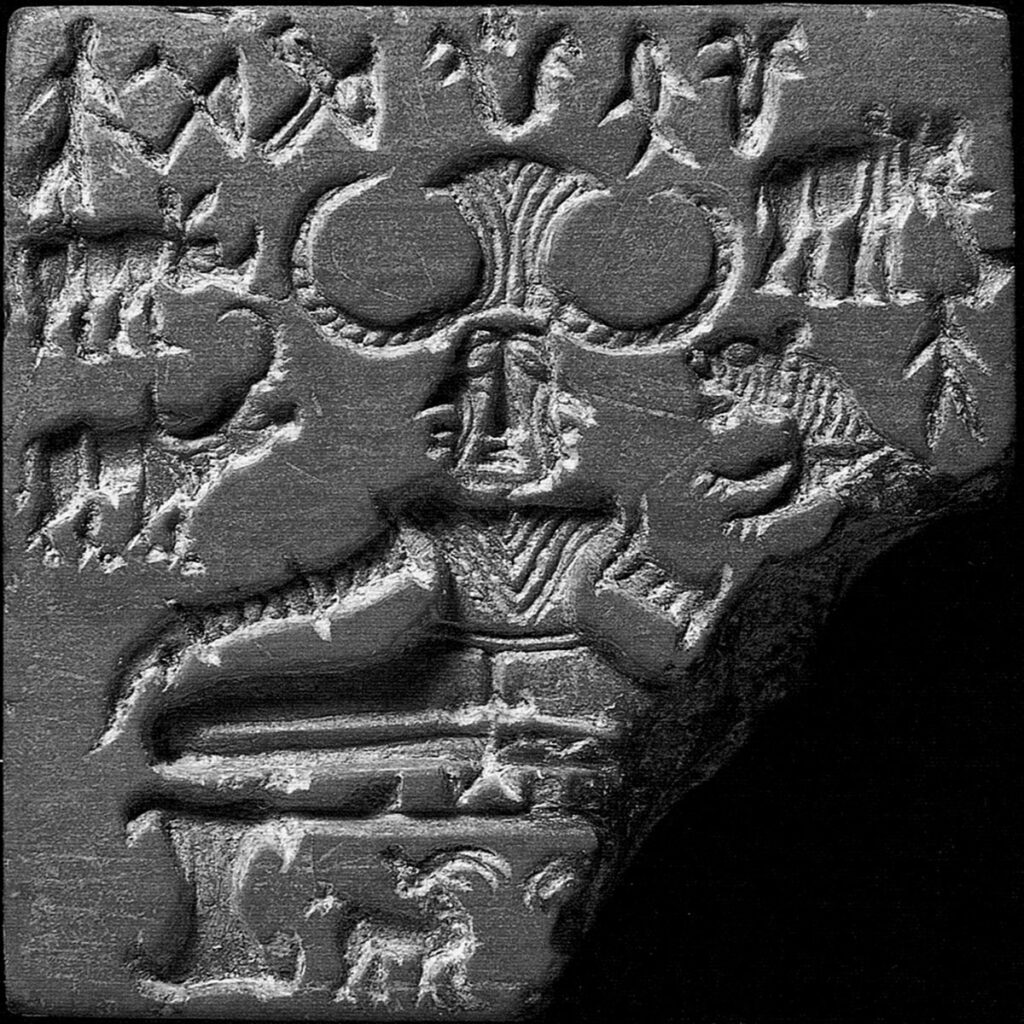
However, contemporary scholars have begun to view the Pashupati Seal through a wider lens. Rather than seeing it as a direct precursor to Hindu deities or yogic practices, many now consider it part of a larger “Lord of the Beasts” or “Master of Animals” tradition found in various ancient cultures across Eurasia.
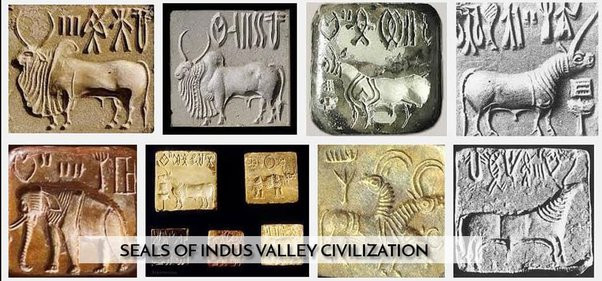
Connections to Other Ancient Mythologies
The seal’s imagery, including representations of fish, draws parallels with other ancient mythologies. The Sumerian god Enki and the Indian god Varuna, both associated with water, share symbolic connections with the seal’s iconography. These similarities highlight the interconnectedness of ancient societies and the diffusion of religious motifs across regions.
A Window into the Past
While the true meaning of the Pashupati Seal remains a subject of debate, its significance in providing insights into the religious and artistic life of the Indus Valley Civilization is undeniable. Whether it represents an early form of Shiva, a precursor to yoga, or a universal archetype of a horned deity, the seal stands as a testament to the sophistication of one of humanity’s earliest urban cultures.
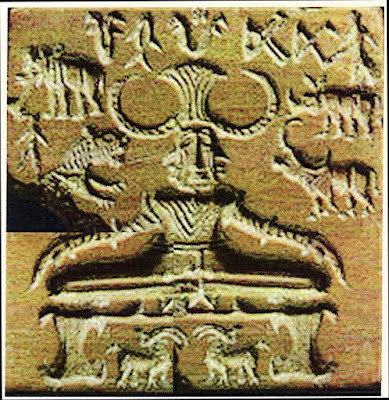
As we continue to unravel the mysteries of the Pashupati Seal, we gain a deeper appreciation for the rich tapestry of ancient mythologies and religious practices that have shaped human civilization for millennia. This enigmatic artifact serves as a bridge between our world and the fascinating, complex society that flourished along the Indus River over 4,000 years ago.
